+Search query
-Structure paper
| Title | The role of conformational flexibility in Baeyer-Villiger monooxygenase catalysis and structure. |
|---|---|
| Journal, issue, pages | Biochim Biophys Acta, Vol. 1864, Issue 12, Page 1641-1648, Year 2016 |
| Publish date | Aug 26, 2016 |
 Authors Authors | Brahm J Yachnin / Peter C K Lau / Albert M Berghuis /  |
| PubMed Abstract | BACKGROUND: The Baeyer-Villiger monooxygenases (BMVOs) are a group of microbial enzymes that have garnered interest as industrial biocatalysts. While great strides have been made in recent years to ...BACKGROUND: The Baeyer-Villiger monooxygenases (BMVOs) are a group of microbial enzymes that have garnered interest as industrial biocatalysts. While great strides have been made in recent years to understand the mechanism of these enzymes from a structural perspective, our understanding remains incomplete. In particular, the role of a twenty residue loop (residues 487-504), which we refer to as the "Control Loop," that is observed in either an ordered or disordered state in various crystal structures remains unclear. METHODS: Using SAXS, we have made the first observations of the Loop in solution with two BVMOs, cyclohexanone monooxygenase (CHMO) and cyclopentadecanone monooxygenase. We also made a series of mutants of CHMO and analyzed them using SAXS, ITC, and an uncoupling assay. RESULTS: These experiments show that Control Loop ordering results in an overall more compact enzyme without altering global protein foldedness. We have also demonstrated that the Loop plays a critical and complex role on enzyme structure and catalysis. The Control Loop appears to have a direct impact on the organization of the overall structure of the protein, as well as in influencing the active site environment. CONCLUSIONS: The data imply that the Loop can be divided into two regions, referred to as "sub-loops," that coordinate overall domain movements to changes in the active site. GENERAL SIGNIFICANCE: A better understanding of the mechanistic role of the Control Loop may ultimately be helpful in designing mutants with altered specificity and improved catalytic efficiency. |
 External links External links |  Biochim Biophys Acta / Biochim Biophys Acta /  PubMed:27570148 PubMed:27570148 |
| Methods | SAS (X-ray synchrotron) |
| Structure data |  SASDBA5: Cyclohexanone monooxygenase, wild-type (Cyclohexanone monooxygenase, CHMO) 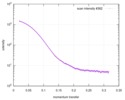 SASDBB5: Cyclohexanone monooxygenase, NADP+, wild-type (Cyclohexanone monooxygenase, CHMO) 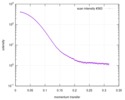 SASDBC5: Cyclohexanone monooxygenase, NADP+ and cyclohexanone, wild-type  SASDBD5: Cyclohexanone monooxygenase, NADP+ and ε-caprolactone, wild-type  SASDBE5: Cyclohexanone monooxygenase, W492A (Cyclohexanone monooxygenase, CHMO-W492A) 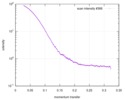 SASDBF5: Cyclohexanone monooxygenase, NADP+, K501A (Cyclohexanone monooxygenase, CHMO-K501A)  SASDBG5: Cyclohexanone monooxygenase, NADP+, W492A (Cyclohexanone monooxygenase, CHMO-W492A)  SASDBH5: Cyclohexanone monooxygenase, NADP+ and cyclohexanone, W492A 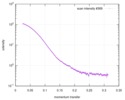 SASDBJ5: Cyclohexanone monooxygenase, NADP+ and ε-caprolactone, W492A  SASDBK5: Cyclohexanone monooxygenase, K328A (Cyclohexanone monooxygenase) 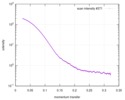 SASDBL5: Cyclohexanone monooxygenase, NADP+, K328A (Cyclohexanone monooxygenase)  SASDBM5: Cyclohexanone monooxygenase, K328A-W492A (Cyclohexanone monooxygenase, CHMO-K328A-W492A) 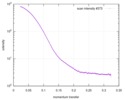 SASDBN5: Cyclohexanone monooxygenase, NADP+, K328A-W492A (Cyclohexanone monooxygenase, CHMO-K328A-W492A)  SASDBP5: Cyclohexanone monooxygenase, N497A (Cyclohexanone monooxygenase, CHMO-N497A)  SASDBQ5: Cyclohexanone monooxygenase, NADP+, N497A (Cyclohexanone monooxygenase, CHMO-N497A)  SASDBR5: Cyclohexanone monooxygenase, K501A (Cyclohexanone monooxygenase, CHMO-K501A)  SASDBS5: Cyclohexanone monooxygenase, N497A-K501A (Cyclohexanone monooxygenase, CHMO-K501A)  SASDBT5: Cyclohexanone monooxygenase, NADP+, N497A-K501A (Cyclohexanone monooxygenase, CHMO-N497A-K501A) 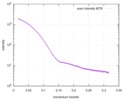 SASDBU5: Cyclopentadecanone monooxygenase, wild-type (Cyclopentadecanone 1,2-monooxygenase) 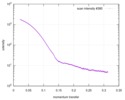 SASDBV5: Cyclopentadecanone monooxygenase, NADP+, wild-type  SASDBW5: Cyclopentadecanone monooxygenase, NADP+ and cyclopentadecanone, wild-type 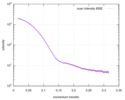 SASDBX5: Cyclopentadecanone monooxygenase, NADP+ and ω-pentadecalactone, wild-type |
| Source |
|
 Movie
Movie Controller
Controller Structure viewers
Structure viewers About Yorodumi Papers
About Yorodumi Papers



 Rhodococcus sp. hi-31 (bacteria)
Rhodococcus sp. hi-31 (bacteria)